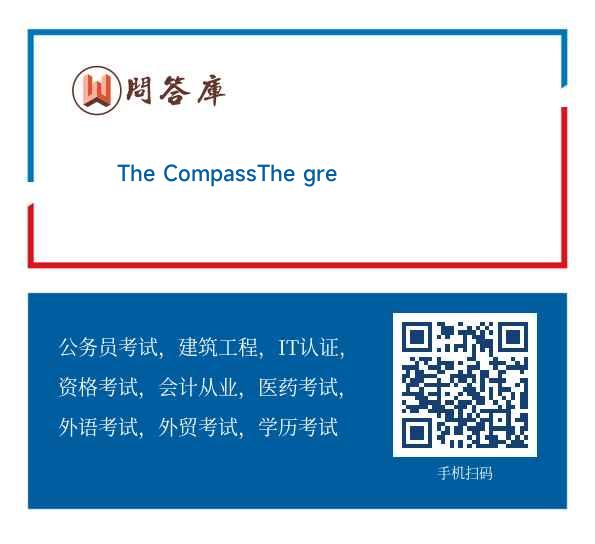The CompassThe great sea voyages of Europe's “
问题详情
The Compass
The great sea voyages of Europe"s “Age of Discovery”, such as Christopher Columbus’s trip to the West Indies in 1492, would have been impossible without the use of a compass. This great device for sea voyage was introduced to the West from China during the thirteenth century A.D.We have to thank ancient Chinese for their invention of the compass.
Two thousand years ago the Chinese had already developed a working compass. A piece of lodestone(天然磁石)would be cut into the shape of a ladle (长柄勺). Placed on a stone board with a smooth surface, the loadstone would move round until the “handle” of the ladle pointed south while the bulk (主体) of the ladle was attracted to magnetic north(北磁极). This interestingly shaped device is mentioned in a book from about A.D. 80.Other ancient books may have dated it as far back as the fourth century B. C.Jade findersplayed an important role in the invention of the "ladle". They traveled great distances to look for jade. In order not to lose directions, they would take a "ladle" with them.
The jade connection is important. Lodestone is a hard material though not as hard as some jade(玉石). And the making of a magnetic "ladle", as well as a highly smooth stone board, would have required great skill. This suggests that the compass was invented by the jade finders of ancient China.
However, the making of a "ladle" was a tough job. Much work needed to shape a piece of lodestone into a ladle would mean much of its natural magnetism(磁性)had been lost . This again meant that only a few "ladles" could have been produced. Small numbers of ladles produced and growing need for navigation led to a search for ways to produce more compasses, and at the same time, smaller and better compasses.
第 36 题 What is the first paragraph mainly about?
A.Columbus was a great sailor and discoverer.
B.The compass was invented by Columbus.
C.The invention of the compass is important in human history.
D.Columbus introduced the compass to the West Indies. 请帮忙给出正确答案和分析,谢谢!
参考答案
正确答案:C
本题考查考生总结主旨大意的能力。段落主旨一般隐含在各段的主题句(topicsentence)中。而第一段的主题句是第一句话:“ThegreatseavoyagesofEurope”S‘AgeofDiscovery’。suchasChristopherColumbus‘StriptOtheWestIndiesin1492,wouldhavebeenimpossiblewithouttheuseofacompass.“简单说来就是”thegreatofseavoyageofEurope’S‘AgeofDiscovery’wouldhavebeenimpossiblewithouttheuseofacompass.“即:大发现时代的发现航海活动没有指南针是不可能进行的。B项”指南针是哥伦布发明的“和D项”哥伦布把指南针引进西印度群岛“第一段都没提到,A项不是本段的主题句。所以正确答案应是C.参考译文指南针欧洲大发现时代的航海活动,如哥伦布1492年远渡西印度群岛,如果没有指南针,是不可能进行的。这种航海装置是公元13世纪从中国引入西方的。我们应该感激古代的中国人民,是他们发明了指南针。早在两千年前,中国人已经发明了指南针。他们把一块天然磁石塑成一个长柄勺形状,放在有光滑石面的石板上,天然磁石旋转直到勺柄指向南方,勺磁石的主体指向北磁极才停下来。早在公元80年就有一本书中提到过这种形状有趣的装置。其他的古代书籍把指南针发明时间追溯到公元前四世纪。玉石探寻者在长柄勺的发明过程中起了重要作用。他们长途跋涉寻找玉石,为了不迷失方向,就随身带着“长柄勺”。与玉石的探寻联系起来是很重要的线索。天然磁石是一种坚硬的材料(尽管没有玉石坚硬)。制造具有磁性的长柄勺和磨成光滑石板,都需要精湛的技术。这就表明指南针是古代中国的玉石探寻者发明的。然而,制造长柄勺是件不容易的差使。把天然磁石磨成长柄勺就意味着它的大部分磁性可能会要消失。这又表明从天然磁石中仅能制造出少量的长柄勺。航海的发展要求人们找到一种能生产出更多、体积更小、更好的指南针的方法。
